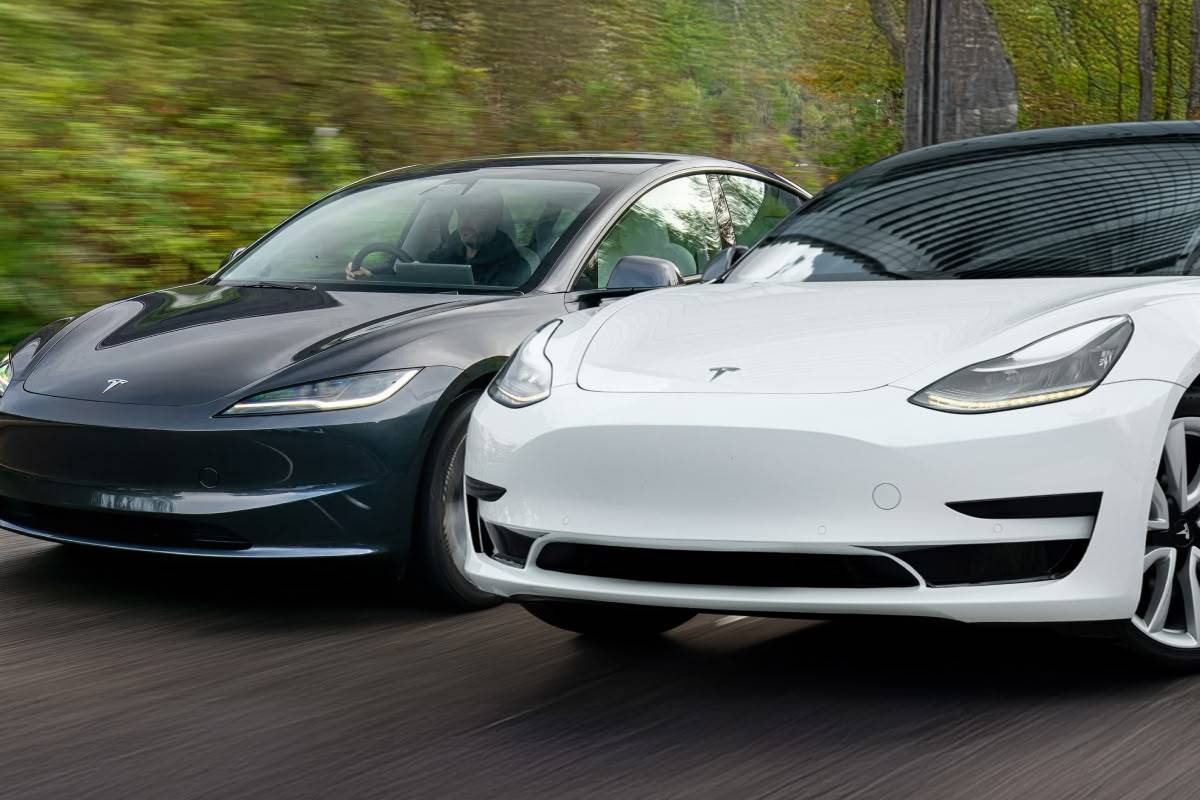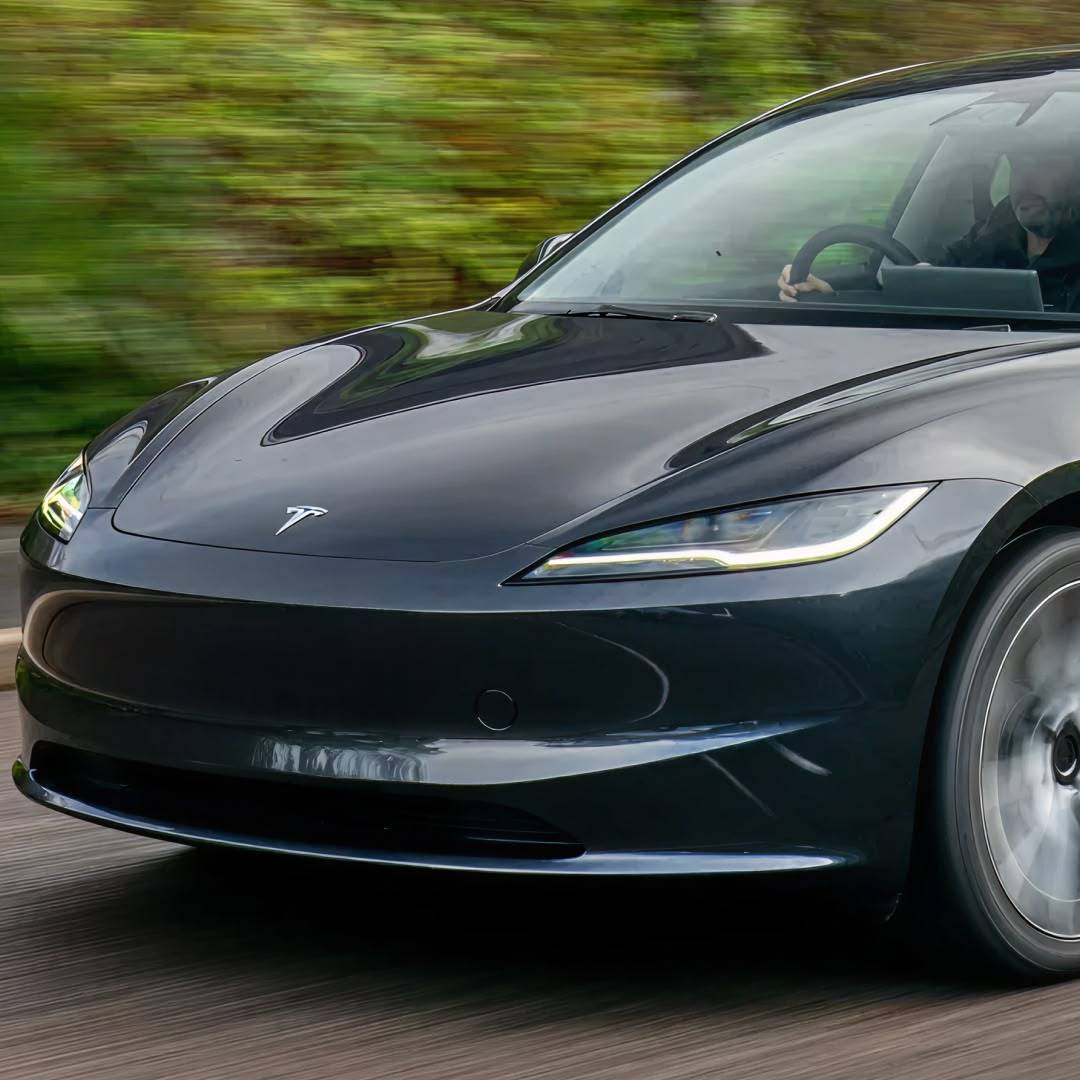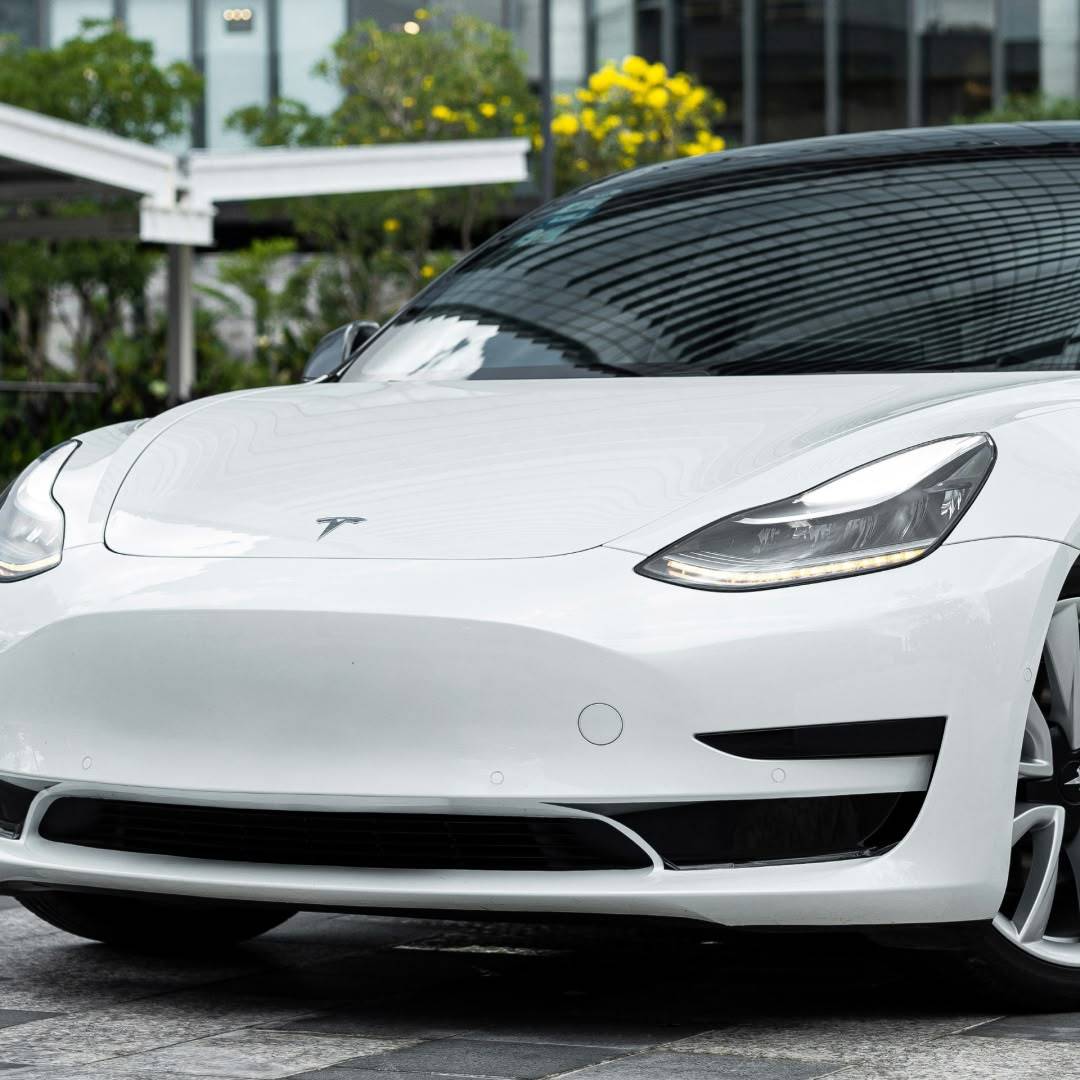[[post.title]]
We're changing for you!
Check out our new website
We're changing for you!
Check out our new website
Jul 31, 2025

Prior to 2017, most people thought about the famous inventor when hearing the word “Tesla.” Nowadays, you are just as likely to induce the picture of a sleek-looking EV by saying it – all thanks to the success of the Tesla Model 3.
Whatever your stance on electrification is, this is the car that showed people it’s possible to create an actually usable electric car. And for this very reason we’re going to talk about it today.
Coming up, we’ll learn:
Enjoy the reading!
The Tesla Model 3 emerged in 2017 as Elon Musk's moonshot to bring electric vehicles to the masses – or at least to the masses who could swing a $35,000 car payment. After years of teasing and production hell, Tesla finally delivered on its promise of an "affordable" electric sedan that wouldn't look out of place in a corporate parking lot.
What made the Model 3 revolutionary wasn't just its electric powertrain – it was the fact that the car offered a complete package. Legitimate 300+ mile range that was actually useful, acceleration that could embarrass many sportscars, and a minimalist but practical interior. In a way, Tesla essentially created the iPhone of cars.
Initial production struggles became the stuff of legend, with Musk famously sleeping on the factory floor and Tesla erecting a tent in the parking lot to meet their production targets. But once the kinks were ironed out, the Model 3 became a sales success. It consistently ranks among America's best-selling sedans and became the world's best-selling electric car by 2020.
Today, the Model 3 faces stiff competition from other brands that started taking EVs seriously. The BMW i4, Hyundai Ioniq 6, KIA EV6, and the Ford Mustang Mach-E all want a piece of Tesla's pie. Will they succeed at taking it? Time will tell, as the overall EV market is beginning to settle.
Instead of speculating though, we’re here to take a look at the Tesla Model 3 itself, so let’s do that!
The current (as of July 2025) Model 3 lineup delivers performance that would have been supercar territory just a decade ago. Except now it comes with a frunk and the ability to update itself while you sleep.
Each variant offers a different balance of range, performance, and creature comfort features, however, certain characteristics are the same for all of them. This includes the 24 cu ft of cargo capacity, external dimensions, and—as of the Highland facelift—the audio specifications. Since the refresh, all Model 3 variants get the Premium System. If you’re interested in the latter, you might want to check out our article on the Tesla Model 3 Sound System, where we dive deeper into all its quirks, features, and development history.
Here’s a small table with the direct comparison of all these variants.
| Parameter | Long Range RWD | Long Range AWD | Performance |
| Power | 295 hp | 425 hp | 510 hp |
| Torque | 309 lb-ft | 475 lb-ft | 554 lb-ft |
| Drivetrain setup | Single motor | Dual motor | Dual motor |
| EPA range | 363 miles | 346 miles | 298 miles |
*Please note that these hp and torque figures are based off of the information found in the Car and Driver car catalogue. Tesla does not provide the official hp and torque figures; however, the pricing, 0–60 times, and ranges included in this article come from the official Tesla website.
 Tesla's approach to model updates involves more code names than a Cold War spy novel.
Tesla's approach to model updates involves more code names than a Cold War spy novel.
The "Highland" refresh arrived in 2024, bringing the most significant updates since the Model 3's launch. Highland brought a sleeker exterior with improved aerodynamics, pushing the drag coefficient to 0.219, down from 0.225.
Its interior received even more attention, with better materials, improved sound deadening, and ventilated front seats. Tesla also added an 8-inch touchscreen for the rear passengers above the air vents. It offers most of the features available in the front 15.4-inch display and the things like rear HVAC controls.
The steering wheel lost its stalks in favor of buttons; a controversial move that has owners either praising the minimalism or cursing every time they try to signal while turning. It's peak Tesla: solving problems nobody had while creating new ones that require software updates to fix. Though you can’t really add physical stalks in the new software release, can you?
As for "Juniper," that's the code name for the Model Y refresh that's already rolling out. The Model 3 won't see another major update for several years, meaning Highland buyers can rest easy knowing their cars won't be outdated next Tuesday.
Here's where things get interesting.
Early Model 3s earned a reputation for serious quality control issues. Panel gaps you could lose a finger in, paint chipping just from being looked at, and trim pieces that rattled like maracas were common complaints.
The good news? Tesla has dramatically improved build quality over the years, particularly with the Highland refresh. Recent models show marked improvement in fit and finish, with better materials and more consistent assembly.
That being said, some common reliability concerns with Tesla Model 3 include:
Interestingly though, many owners report going years with virtually zero maintenance beyond tire rotations and refilling washer fluid. You don’t need to change the engine oil (duh!) and the regenerative braking system means brake pads can last more miles than in comparative ICE-powered cars.
While the above may be true in some cases, recent reliability studies haven't been kind to the Model 3. The German TÜV tests ranked it last among 2–3 year old vehicles for issues with lights, brakes, and suspension. For Tesla, the fault detection rate was 14.2%, compared to 2.4% of Honda Jazz, which was the most reliable car according to the same study.
Is it something you should be worried about? Not necessarily. Most of the German rankings and reliability studies are conducted according to EXTREMELY strict criteria. Real-life user reviews are oftentimes more accurate and practical.
 While Tesla's minimalist approach might be great for some people, some Model 3 owners seek out aftermarket improvements, especially in terms of ergonomics or phone integration. Luckily, it’s very easy to add entirely new features to this car and we’ve taken full advantage of that for you. For a detailed product overview, check out our comprehensive guide to the top 5 Tesla Model 3 mods, but let’s take a look at some of the upgrades currently in our offer.
While Tesla's minimalist approach might be great for some people, some Model 3 owners seek out aftermarket improvements, especially in terms of ergonomics or phone integration. Luckily, it’s very easy to add entirely new features to this car and we’ve taken full advantage of that for you. For a detailed product overview, check out our comprehensive guide to the top 5 Tesla Model 3 mods, but let’s take a look at some of the upgrades currently in our offer.
1. Tesla Model 3 Power Frunk Retrofit
Arms full of groceries? The Tesla Model 3 Power Frunk lets you automatically open and close the frunk via the infotainment screen, Tesla App, or Siri from your Apple Watch. Electric struts and anti-pinch sensors make it the convenience Tesla forgot to include as standard.
2. Physical Tesla Buttons Retrofit
The touchscreen craze the automotive industry seems to be going through is not our thing – we prefer the “old-school” physical inputs that you can control with your eyes closed. If you’re anything like us, you’ll love this one. Just like its name suggests, this retrofit adds tactile controls for climate, seats, and multimedia in your Tesla Model 3. Results? No more menu diving at highway speeds!
3. Tesla Model 3 Yoke Replacement Upgrade
The airplane-inspired yoke transforms your Model 3 into a spacecraft cockpit – literally! You’ll gain unobstructed gauge views and head-turning style, though you’ll need to learn parallel parking again. The shape of the yoke takes some getting used to.
4. Tesla Screen Protector for Model 3
Made of 9H tempered glass, this one will shield your command center/infotainment display from scratches and fingerprints. What sets this particular protective screen apart from similar products is the included fitment guide, which allows for a bubble-free and perfectly even installation.
5. Tesla Model 3 Sound System Upgrades
We mentioned the Tesla’s audio earlier and if that’s your thing, we strongly encourage you to take a look at that guide. In short: while the Tesla Model 3 offers a pretty decent factory sound setup, it’s still a bit lacking, especially when it comes to the amplifier(s). Taking over a decade of our aftermarket BMW audio experience, we’ve created the Alpha One Tesla Sound System Amplifier.
What does buying it get you?
Not convinced? Check out the audio forums – our satisfied users aren’t just a myth ;)
The Model 3 has evolved from an ambitious EV-for-the-masses experiment to a legitimate mainstream option. It's not perfect – the build quality remains inconsistent, the minimalist interior isn't for everyone, and the lack of Apple CarPlay in 2025 feels almost spiteful.
But here's the thing: the Model 3 delivers on its core promise of making electric driving not just acceptable, but practical. The instant acceleration never gets old and the Supercharger network makes everyday driving convenient. For buyers willing to embrace the Tesla way of doing things—touchscreen everything or unconventional controls—the Model 3 offers a comprehensive package.
Just maybe keep in mind that "within spec" is sometimes Tesla-speak for "good enough" ;)
The 2024 Tesla Model 3 starts at $42,490 for the base Long Range RWD model and can go up to $54,990 for the Performance variant.
The Tesla Model 3 weighs between 3,880–4,050 pounds depending on the variant, with the Performance model being the heaviest.
Using a Tesla Supercharger, you can add about 200 miles of range in 15 minutes. Home charging on a Level 2 charger takes 8–12 hours for a full charge.
Range varies from 298 miles for the Performance model to 363 miles for the Long Range RWD variant.
The Model 3 accelerates from 0–60 mph in 2.9 seconds (Performance), 4.2 seconds (Long Range AWD), or 4.9 seconds (Long Range RWD).
Reliability of the Tesla Model 3 seems to have mixed opinions, with newer models showing improvement but still experiencing issues. For example: build quality and some components like control arms and 12 V batteries.
No, the Model 3 doesn't include a spare tire. Tesla provides a tire repair kit and roadside assistance for flat tires.
The Tesla Model 3 was first delivered to customers in July 2017, with widespread availability beginning in 2018.
Customer Reviews
Comments
Rate the product
This email is already registered.
Please Log In to continue.
Let us find
the right version for you
We'll confirm pricing, compatibility and product details for your car:
Enter your VINThe 2024 Tesla Model 3 starts at $42,490 for the base Long Range RWD model and can go up to $54,990 for the Performance variant.
The Tesla Model 3 weighs between 3,880–4,050 pounds depending on the variant, with the Performance model being the heaviest.
Using a Tesla Supercharger, you can add about 200 miles of range in 15 minutes. Home charging on a Level 2 charger takes 8–12 hours for a full charge.
Range varies from 298 miles for the Performance model to 363 miles for the Long Range RWD variant.
The Model 3 accelerates from 0–60 mph in 2.9 seconds (Performance), 4.2 seconds (Long Range AWD), or 4.9 seconds (Long Range RWD).
Reliability of the Tesla Model 3 seems to have mixed opinions, with newer models showing improvement but still experiencing issues. For example: build quality and some components like control arms and 12 V batteries.
No, the Model 3 doesn't include a spare tire. Tesla provides a tire repair kit and roadside assistance for flat tires.
The Tesla Model 3 was first delivered to customers in July 2017, with widespread availability beginning in 2018.
Customer Reviews
Comments
Rate the product
This email is already registered.
Please Log In to continue.
[[comment.name]]
[[comment.text|raw]]
BimmerTech
Newsletter
[[comment.name]]
[[comment.text|raw]]
BimmerTech